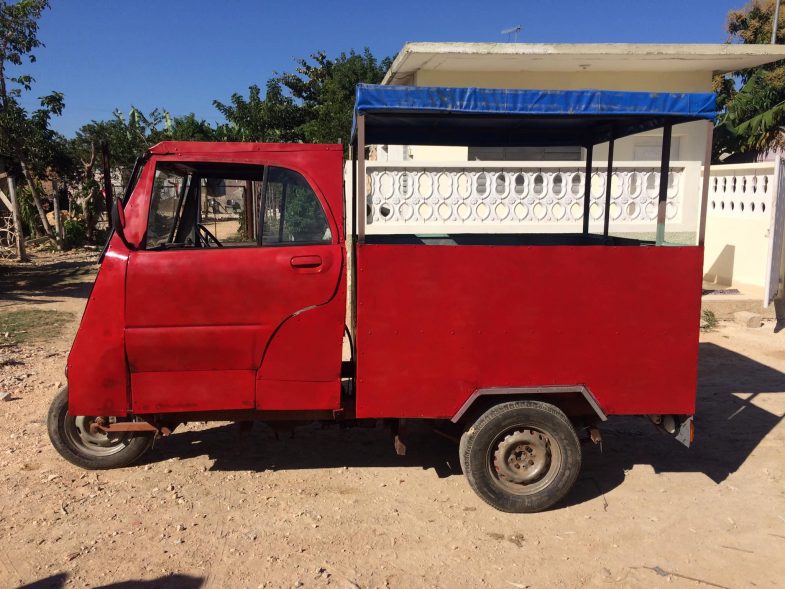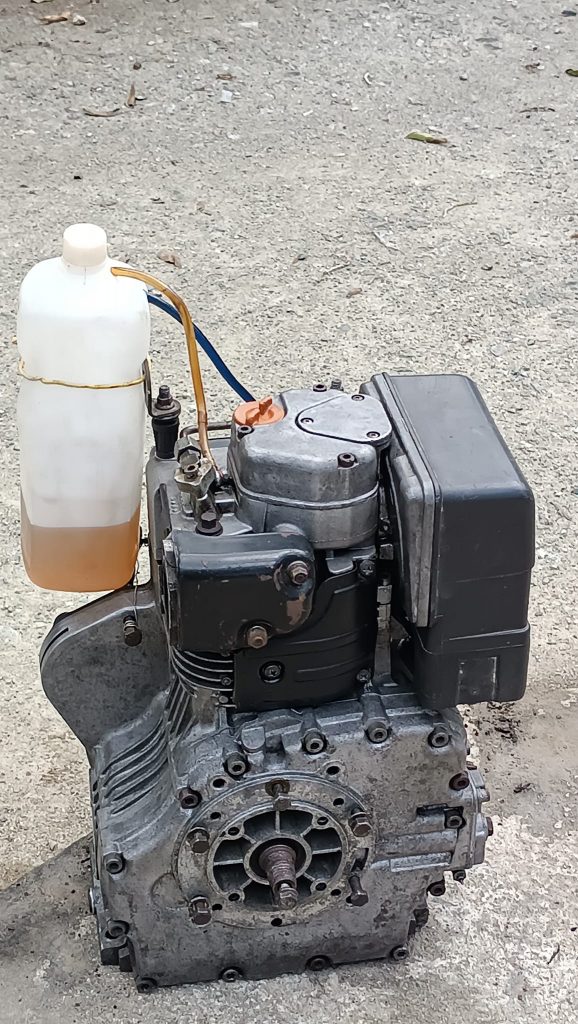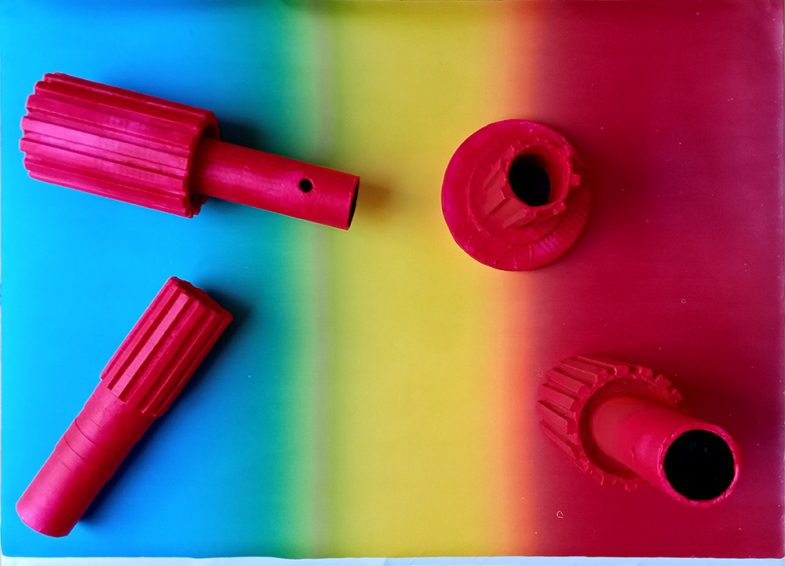Revolico. Provisional Epilogue III (Rikimbili)
“It has nothing to do with a technical renovation of language, but rather of its mobilization in the service of the struggle or work; in any case, in the service of the modification of reality and not its description.” – Walter Benjamin
“We should learn to stop the unequal fight of a literary language that attempts to critically analyze an audiovisual language. Nothing precludes a movie from being the critical analysis of another movie.” – Julio García Espinosa
Nothing precludes a rikimbili[1] from being the critical analysis of another rikimbili.
I want to write a rikimbili text. I felt the urge to add this word and its plural form to the Spanish dictionary in Word, but I fell in love with the red line beneath the nine letters of rikimbili. Microsoft’s software has seen the word for what it is: rikimbili is a hostile term, a term that is disobedient, intrusive, or alien. I see now that, more than a text about rikimbilis, I have to write something rikimbiliesque. For now, I’ve brought questions and fragments with the intention of matching them up and moving forward; I don’t intend to conclude, only to open up spaces for future connections.
Every time I look through the posts, photos, and comments in Facebook groups, as well as the ads on revolico.com, published by people selling their rikimbilis in Cuba—or that are trying to buy one, whether fully assembled or piece by piece—I get sucked in by the repetition of certain textual and formal elements.
It’s to be expected that the types of motors used would be repeated: chainsaws for cutting down trees, as well as lawnmowers; backpack sprayers for fumigation; water pumps for agricultural irrigation.[2] And it’s normal that the brand-names would be repeated: Stihl for the first two, Lombardini for the third. Redundant are the types of brakes; and the frames, “horses,” and chassis; the seat shapes; the chain drives; the types of fuel tanks. When all is said and done, sources for finding these pieces and parts are extremely rare. Imports have been severely restricted by the state for many decades, and almost everything that comes into the country must enter “officially.”
But those aren’t the repetitions that entrance me in the posts and photos of “Rikimbilis de Cuba Compra y Ventas” [Cuban Rikimbilis: Buy and Sell] and other places. What calls my attention is the appearance of new words that—sequenced in sentences—point to the emergence of a new language, words that are the vroom-vroom of a new syntax and, if we let Borges stimulate us,[3] that can be the promise of a new philosophy. I repeat: What’s interesting is not the repetition of the same motors and parts besides, but rather the repetition of the terms that—in their slang—name or articulate them. My goal here is not a classist glance; nothing could be further from my intent. The debate about the quality of the current educational system in Cuba isn’t interesting either; nor would it be to push this study toward an analysis of marginal lingo. What’s interesting is understanding how new objects drive us to produce new languages. To understand that new needs demand the emergence of new productive protocols, new ways of speaking and doing. New conveyor belts are needed with new mounting sequences. The rikimbili as the new conveyor belt. That sounds better. Surely the opposite—a rikimbili made with the motor from a conveyor belt—already exists in some town on the island.
When I said that the terms used to name the pieces and parts were repeated, I was exaggerating. What is repeated is that everyone understands the terms written out in different ways, written out experimentally, and anti-hegemonically I would say. No one complains; no one says I don’t understand you; few people make fun. Everyone in these forums has accepted the flexible and inclusive rikimbili language; some even name the mother object of this language in different ways: rikis, riquis, riquinvili, riquinbili, riquimbily, riquimbili, rikimvily, riquibili… In the end, rikimbili is just one variation of the organization of those letters and syllables. Rikimbili as a meta-anagram.
For hours, I scroll through the Facebook page “Riquimbilis y ciclomotores” [Riquimbilis and Mopeds]. I roll my eyes over infinite galleries of photos laid out like mosaics. The pictures show pieces and parts of vehicles carefully placed on mosaic floors in Cuban homes. It’s worth noting, and it makes sense, that the photos that predominate on these pages for rikimbilis were taken in domestic contexts. Most of the economic transactions in Cuba take place under the lamps of a home. For this reason, the “sets” where these photos are taken, in addition to the floors of domestic spaces, include beds, couches, dining room tables, chairs. I’ve seen many pictures of motors placed on chairs, so as to be photographed from multiple angles. The structure of the chair acts as the frame for the motor on sale. I’ve seen Rikimbili chairs.
I’ve seen, on repeated occasions, that in two photos of a single post, the first picture will show the profile view of a rikimbili fully assembled, and the second will show the same rikimbili spread out, in pieces and parts, on a tile floor. The mechanical fragments seem to integrate themselves into the decorative floor patterns, as if to promise new combinations. Very often the floors of Cuban houses are made—through repair—with tiles of differing design and material, and this hybridity finds an unexpected echo in the diverse origins of the rikimbili pieces positioned for the photo, side by side. In these forums, it’s common to find pictures of the “kit” needed to assemble a rikimbili. These are offered by people in Miami who have discovered this shortcut through the North American market, and send the new kits to their relatives in Cuba. But the most common “kits” in these posts are made up of disparate pieces and parts, articulations of components from different brands and generations, and frequently these include pieces of creole production. The rikimbili is the kit, a sudden gathering of parts, “the lucky meeting of a sewing machine and an umbrella on a dissection table.”[4] This is why I like to think that rikimbili names, above all, a creole power of association. The rikimbili—at the level of the idea—has as much associative power and creative potential as the mind of a conspiranoid individual.
There is no difference between the two states of a rikimbili: assembled and disassembled. The same force that combines its parts separates them. The mosaic law that joins the mechanical fragments is the same law that pulls them apart. In a context of so much need, where direct sale and purchase operate as an immediate economic spillway, it’s to be expected that an assembled rikimbili would figure only as the tactical display—a provisional one—that seeks to catch the eye of a potential buyer. Nevertheless, the assembled rikimbili is a promise, a work in progress, something that cannot be finished—and if completed, could not be a rikimbili.
Sometimes, rikimbilis can’t be seen. They are first built as messages on WhatsApp, or as posts on Facebook. The post as a film editing table. You write what you have, and the comments operate like addition or subtraction processes in the production of your rikimbili. Some people criticize you or offer you solutions; others make offers to buy or sell. The collection of texts is also an assembly; it’s a rikimbili. For this reason, it’s common for many people to refer to their rikimbilis as projects.[5] “Hi, this is my project, don’t criticize it too much.” That’s the first line of a post that recurs day after day, week after week. Rikimbilism as a hobby. On the one hand, as we’ve already seen, the rikimbili is associated with need. Its greatest presence and relevance coincided with the Special Period in Time of Peace. The fuel shortage after the reduction of the economic relations with the USSR demanded of individuals and families that they find alternative means of transportation, both for passengers and cargo. If it is true that the term was used in cities only for the purpose of naming bicycles with motors, then it is just as true that it was used, and has been since then, in rural areas to name all types of home-made vehicles. But, on the other hand, Cuban rikimbilians now form a club in which they refer to their devices as projects and expect to hear the opinions of their colleagues in the same way that occurs in the forums for karting and model airplanes.
In the last few weeks, news and a publication by the regime has been unsettling the rikimbilian forums. In the Gaceta Oficial N. 63 Extraordinaria from July 20th, 2021, the regime put out Resolution Number 200, through which the state is effecting a “process of homologation of motor vehicles, trailers, semi-trailers, assembled with parts and pieces.” It’s surprising that the editors of the Gaceta Oficial employed the term riquimbili. The newspapers from the rural areas say that on August 5th, they will begin the process, and committees will be placed in every region to review and approve the vehicles. In Article 8.1 of the Resolution, it states: “The Committee, regarding those vehicles declared Apt, will denominate them Vehicle Assembled from Parts, abbreviated VAP, and should it resemble an existing brand, then to its name will be added the denomination of that brand.” With the proposal of the VAP, the state joins the effort to discover new terms that could bring order to the revolt that has been shaking up Cuba’s material culture for several decades now. Following the normative principle of the state, I predict that “VAP” will also be useful in naming Viviendas [Housing] Assembled from Parts. In the pictures of rikimbilis, one can see, as I’ve already said, parts of homes made by the same people that make the rikimbilis. Additionally, as I’ve already explained, the pieces become confused with the designs and fragments of the floor tiles. If VAP is rikimbili, rikimbili is Architecture of necessity.[6]
The news about the new process of homologation prompted enormous activity on the forums dedicated to these necessities. The state expects the rikimbilis to comply with technical, legal, and formal demands that are difficult to satisfy. Frankly speaking, amnesty was expected. For this reason, there are many pessimistic comments on the forums of Facebook and WhatsApp that attribute a controlling and discriminatory role to Resolution Number 200, more so than a conciliatory and inclusive one. On the one hand we have: technical automotive norms; formal and structural demands; and the existence of documentation of ownership for each part used in the construction of a rikimbili (purchase receipts, or sworn testimonies that the piece was not stolen from the state or an individual). On the other hand we have a torrent of unclassifiable, unfinished, improvised devices, pieces and parts that are overflowing, I would say. The only thing all of these objects share is that they exist to satisfy the need for transportation that has not been met by the state’s centralized state economy. It may be that the rikimbili does not fit the regulatory framework of the state, but it has covered the empty space left by the state in its incapacity to solve the severe transportation problem that afflicts the island. The rikimbili has always filled an empty space; that’s what it’s about. The rikimbili is a meta-placeholder. Many provisional objects created by Cubans to confront the economic crisis qualify for that title. The rikimbili is a substitute, a vicarious object that temporarily holds the place created in the culture by another object, now absent.
I’m going to go ahead now and sneak in—as if I were putting a Lombardini irrigation motor on the frame of a creole bicycle—the first notes of an ode: Rikimbili as placeholder. This term used to be employed in graphic design to name the black rectangles that occupied, in the pre-press archives, the areas destined for illustrations and photographs. Other terms close to placeholder in different contexts: proxy, vicar, substitute, surrogate, succedaneum, and ersatz. The Pope, as we know, is the vicar of Rome, something like Jesus Christ’s placeholder on Earth. It’s precisely in the power structure that this tactical placeholder role survives. I wonder: What political potentialities reside in the placeholder image? When it temporarily occupies a space, be it a graphical surface, a physical space, or a discourse—what political possibilities does the image enable at its insertion? Undoubtedly, the placeholder is that tactical object that, upon its insertion, contaminates, corrupts, empowers, amplifies, or interrogates the space it comes to occupy. Isn’t that what the Pope does? Now I am seized by doubt: is the “Popemobile” a rikimbili?
We know how the rikimbili impacts the city, at the level of sound for example. In Havana, you don’t see any rikimbilis, but you hear them as they furtively circulate on the backstreets. The sound is the same as the one provoked by an individual who charges toward you, a running chainsaw in his hands, and then keeps going past you until the sound disappears. But in what other way does the rikimbili challenge our lives? What critical look at design does this object propose? How does it challenge the aesthetic, utilitarian, authorial and consumer notions entrenched in culture by the market? Thinking about the rikimbili from design is already corrosive to certain strata based on the idea that design as a discipline should only be practiced by professionals. What space does this intruder make for new questions, ideas, and devices? What does this object of necessity propose in terms of production? Thinking of the rikimbili as a placeholder grants us a wider look at it and at its context of insertion. For the moment, we’ve realized its capacity to expose the rigid framework being used to try to trap it. The rikimbili as a placeholder is, at the same time, both an indicator (index) of its placeholder function and an indicator (index, deictic) of the dimensions or the qualities of the absent, of that which has allowed it, by some trace of similarity, to occupy its place. The placeholder is a photo of the “frame,” and the latter frames what is framing it: because of its need to match up, it ends up describing the context into which it is inserted. Perhaps we can’t answer even the first of the questions in this paragraph, but we can accept the rikimbili as a document and as a precipitate of the current Cuban society. To think of the rikimbili as an archive. That’s another trip.
[1] Rikimbili is the term used in Cuba, since the 90s, to name the vehicle made by adding a gas motor to a bicycle. Today the term includes all vehicles built from parts. I write the word rikimbili with a “k” because it is one of the common forms, and because that letter, as well as the “y,” for a few decades now, have been used repeatedly in the creation of new names for people on the island. Both letters have an important role in the new creole onomastics.
[2] Other motors brought into the country over the last few decades and mentioned frequently in the rikimbilian forums are: Hero Gizmo Honda, Hero Honda Panther, Piaggio, Champion, Wiper, UD15, Micuni AX100, Isuzu, Yanmar, Ruggerini.
[3] I am thinking of this line by Jorge Luis Borges: “Philosophies are nothing more than a coordination of words.”
[4] Conde de Lautréamont, Obras Completas, Editorial Argonauta, 2014. Canto Sexto, page 236.
[5] On August 19th, 2021, user Ale Santos published, in “Rikimbilis de Cuba Compra y Ventas,” photos of his device and wrote: “Hi, group! Here you can see my project, still unfinished. A little motor from a Sthil 441 chainsaw, a 70 cc 50mm piston, centrifugal clutch, and it has 5.7 cv. I’m open to all types of criticism. Greetings.” The next day, user Leo Merlin uploaded two photos of his rikimbili and writes: “My little project, suggestions and critiques are welcome.” A third user announces: “Good evening group, I’m selling this unfinished project, Lombardini motor (86 mm), 3-speed transmission with reverse, chain differential, all factory-made from a scooter, factory-made front, new tires, non- pneumatic tires (13” rim) it’s in Matanzas.”
[6] www.architectureofnecessity.com



